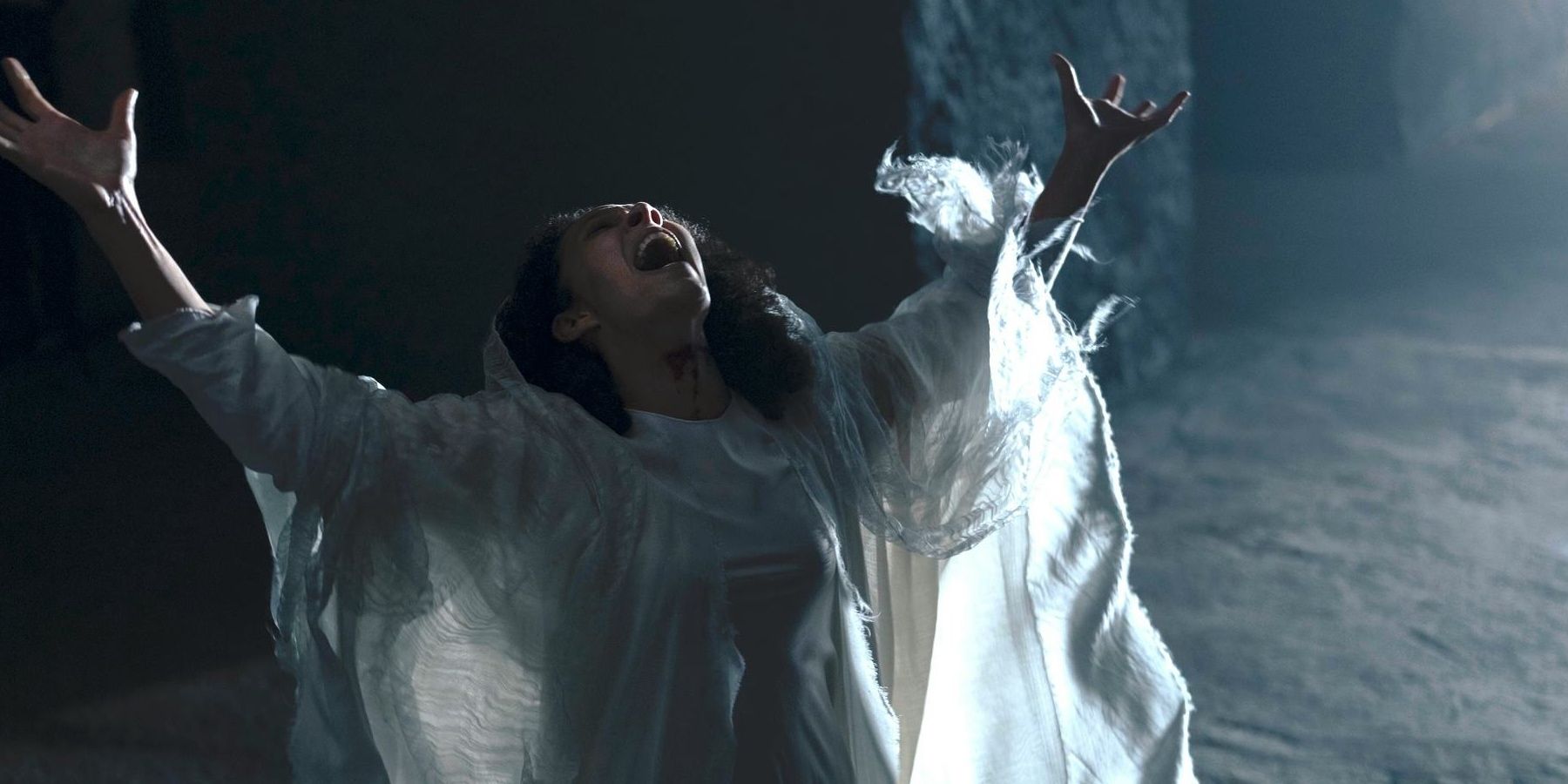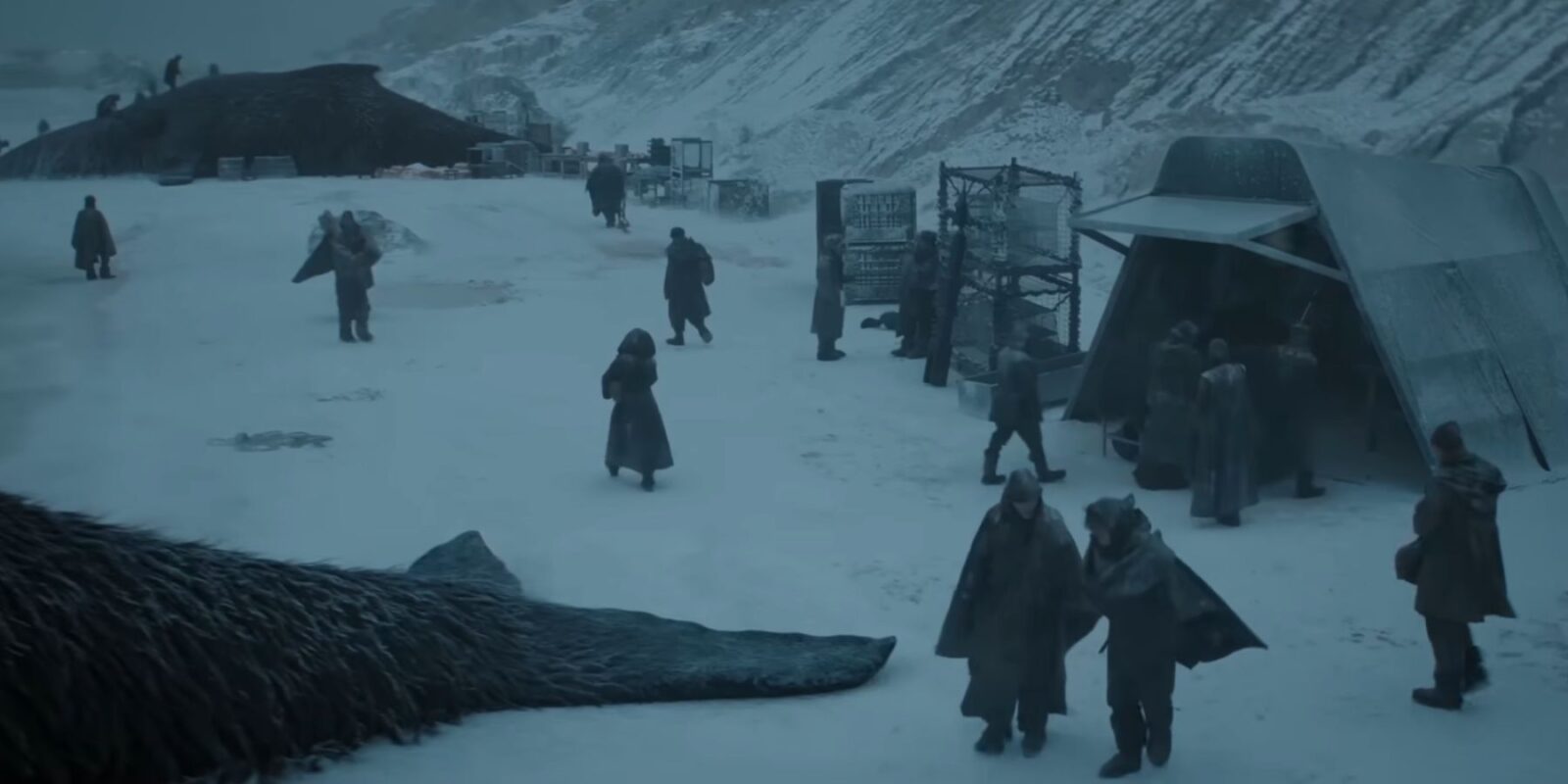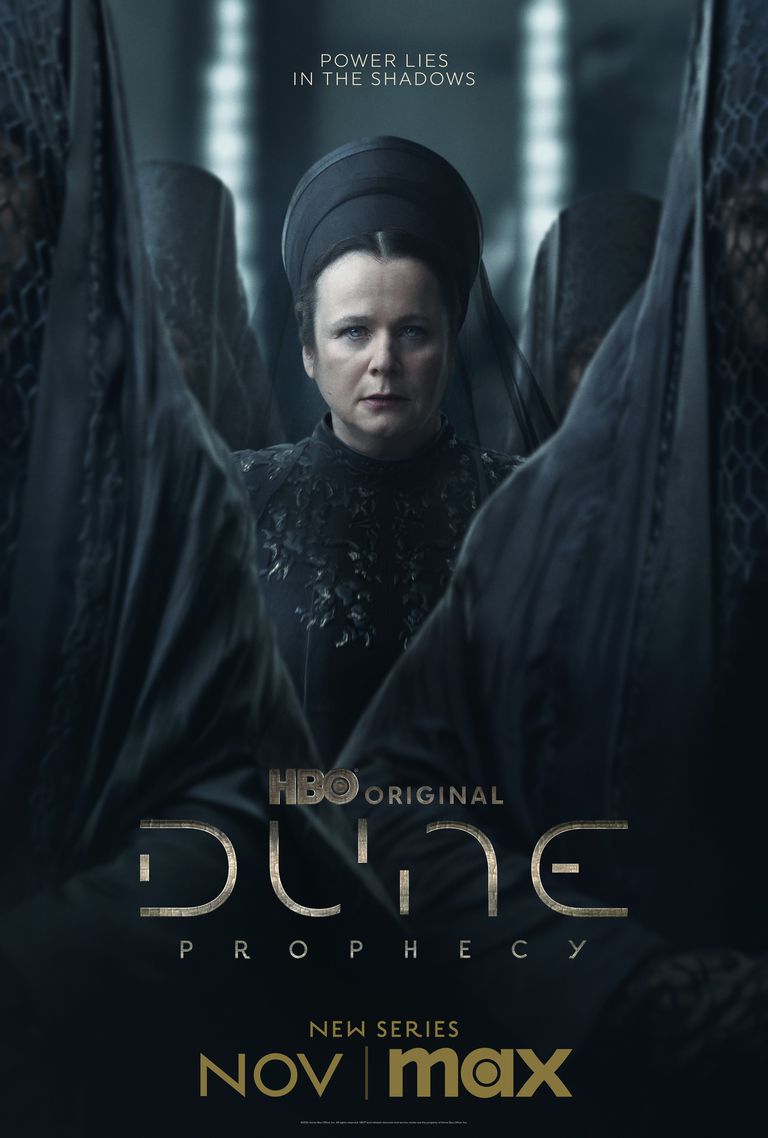Key Takeaways
- The fur-whales in Dune: Prophecy signify the Harkonnens’ path to restoring their family name.
- The show references the exploitation of indigenous populations in relation to the whales.
- Dune: Prophecy showcases worldbuilding through the commodification of alien creatures.
In its first three episodes, Dune: Prophecy has already given its audience some striking visuals, but one image stands out as uniquely strange. In the opening credits, among shots of spice, planets, and DNA, viewers are treated to the image of furry, whale-shaped carcasses lying on an empty plain. When they made their first appearance in the new intro beginning in episode two, they seemed almost too random. But by the following episode, their significance started to become clearer. So what’s the deal with those beasts, and how do they fit into the world of the show?
Episode one, “The Hidden Hand,” introduces viewers to the status of the Harkonnen family, over 10,000 years before the birth of Dune’s protagonist, Paul Atreides. After the war against the “Thinking Machines” known as the Butlerian Jihad, the once-powerful Harkonnens are forced to live as outcasts after it’s believed that they deserted the fight. This loss of status is what motivates Prophecy’s protagonists, Valya and Tula Harkonnen, to restore their family name by any means necessary. It’s starting to look like those whales, at least in some part, will have a hand in bringing back some of their influence.

Related
Dune: Prophecy – ‘The Agony,’ Explained
Episode 2 of Dune: Prophecy puts one of its characters through a pretty ominous sounding ordeal. But what is it?
The Harkonnens and Whales
Fans of the Dune novels know that the “fur-whale” is an established part of the series lore, and Dune: Prophecy shows its beginnings. During the party scene in episode one, the then-Baron Harkonnen attempts to engage Emperor Corrino in a conversation about the lucrative whale industry, before he’s brushed aside for more pressing matters. The Emperor’s presence at this gathering implies that the Harkonnens have regained at least some amount of status. However, this line seems like a brief aside, or maybe a quick joke at the expense of the Harkonnen family. At the time, audiences don’t have context for this remark.
This changes in episode three, “Sisterhood Above All.” The audience is taken back 30 years into the past, getting a glimpse of the planet where the Harkonnens were exiled, Lankiveil. It’s a chilly, gray planet, where the principal source of industry appears to be the catching and processing of these furry whales. One shot shows people systematically removing the fur and blubber from a group of whale carcasses, exposing the massive rib cages underneath.

Related
Dune Prophecy Fans Need to Watch Travis Fimmel’s Other HBO Sci-fi Series
Travis Fimmel stars in two major HBO sci-fi series which share more than a few similarities.
This image calls to mind indigenous peoples in the far Northern Hemisphere, like the Inuit and Iñupiaq, and their relationship with whales. They would hunt the creatures and use all of their parts for food, warmth, and tools. Many of these cultures revere the whale as a sacred creature and a giver of life, and it is believed that people cannot exist without it. This approach is a far cry from the commercial whaling industry that would arise in Europe and America in the 18th and 19th Centuries, which viewed whales as a resource to be exploited by the upper classes. Their oil was used to light lamps, and their bones used for corsets.
Dune: Prophecy’s Roots in Reality
As seen in this flashback, it seems that the Harkonnens are outsiders to the world of whaling. They live among the people of Lankiveil, but many hide from view, lest their shameful identity be discovered. But 30 years later in the series’ timeline, it appears that the family has figured out how to turn whaling into a major industry. It’s enough to get them a seat at the table again, while still dealing with the stigma of their family name. This is a pattern seen throughout history on planet Earth as well. Colonial powers have often figured out ways to exploit native populations and transform their livelihoods into big business, while simultaneously disenfranchising those peoples.
In the United States, native peoples hunted buffalo for centuries, using their pelts for warmth and their meat for food, but always with a healthy respect for the animal and an eye towards preserving its population for future generations. But in the 18th and 19th Centuries, a small number of settlers began to figure out how to get very rich off of fur trading. They hunted the buffalo to near extinction almost solely for their pelts, often leaving the skinned carcasses to rot. This is one example of how, like a lot of great science fiction, Dune: Prophecy has roots in a recognizable reality. It draws from a history that hits surprisingly close to home.
Viewers will have to wait and see how the Harkonnens’ return to the upper echelons of society (and the settling of their new homeworld, Giedi Prime) plays out. But based on the evidence of episode one’s brief comment and episode three’s flashback, it looks like those whales will play a major role. It’s already clear that the Harkonnens will stop at nothing to restore their name, so the mass exploitation of an animal as a commodity seems to be in the realm of possibility. This detail is also a testament to the worldbuilding of Dune: Prophecy’s creators, where every detail matters. Every odd, alien creature adds to the story.














Leave a Reply